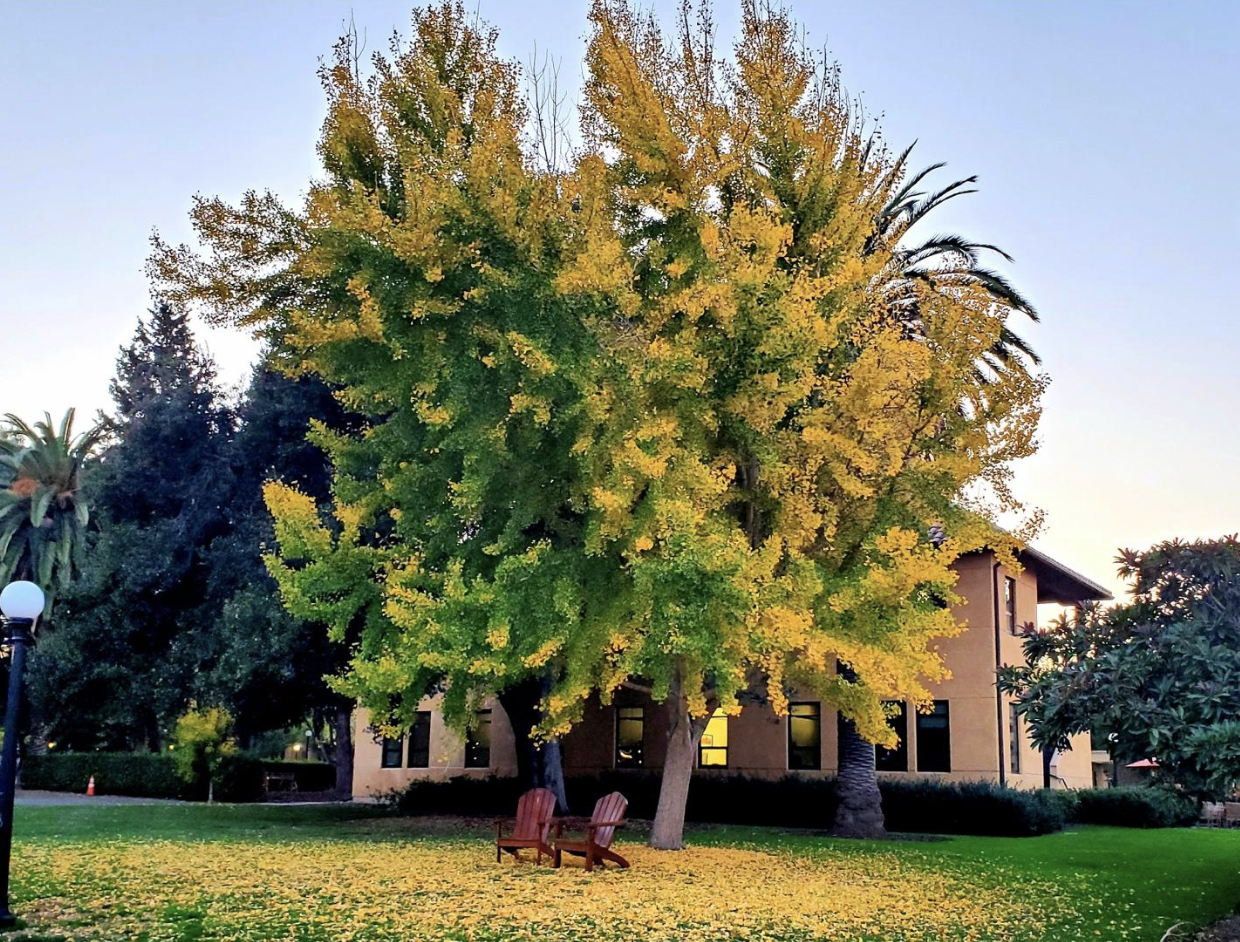The first quarter on campus can often feel like a whirlwind. We are rushing from class to class and turning in one set of assignments after another. It often feels like there is no room for a breather. However, every once in a while, a scene of the campus’s nature forces me to take a breath, because it takes my breath away.
I bike along Escondido Village and notice the autumn trees — the ember, jade and ruby leaves that, like jewels, adorn their branches. Under the sunlight, these leaves seem to glow.
Between Meyer Green and the Clock Tower, there is a large yellow Ginkgo tree. Its tiny golden leaves have fallen like a pile of glitter beneath. Lining another street are pink locust trees, teeming with flowers. With their trunks, they seem like a series of standing bouquets. Exiting the backdoor of Encina Hall, I am greeted by a pop of violet flowers in the foreground of cobalt blue skies and a fading round moon. In the evenings, the sunset paints the sky with splashes of pink, purple and marigold, with the silhouette of entangled ornate tree branches framing this portrait. Behind the alumni center, hummingbirds flutter about in the background sounds of a waterfall.
There is so much beauty and life in the campus nature around us, and I am sure that you have seen scenes that have stopped you in your tracks.
Although we currently pass much of our time indoors, we have spent much of our human history in the company of Mother Nature. Woven into our souls is an affinity for her. Growing research has found that spending mindful time amid trees reduces stress and anxiety. It also boosts the immune system, increases our creativity and focus and helps give respite to our ruminating minds. In fact, recognizing the benefits, Japan in 1982 coined a term for it: Shinrin-yoku, meaning “forest bathing.” Japan encouraged the practice as part of its national health program. It involves immersing oneself in nature, savoring the sights, sounds and smells.
Of course, we do not need to hike to a forest to experience the benefits. At the Farm, we are fortunate to have access to a rich diversity of flora and fauna. I recall one afternoon, passing by Meyer Green. The shadows on the field were long, but not as long as the day had felt. Allured by the golden grassy hills, I rested my backpack and sat there. Then I decided to lay down and close my eyes. I took a deep breath. For the first time in a while, I felt connected to the earth’s rhythm. I listened to the murmur of insects, chirping of birds and the conversation of trees as the wind rustled past their leaves. I heard the chatter of students, the footsteps of passersby and the symphony of cycling wheels and bicycle bells. This was the world that was always spinning around me, but now I had the chance to simply sit back and observe. Even though I had only taken a ten-minute nap, I felt rejuvenated for the rest of the day.
Nature fills us with not only energy, but also reserves of strength, resilience and wisdom. Albert Einstein once said, “Look deep into nature, and then you will understand everything better.” Nothing in nature is static — everything is ever-changing. Yet, we know that the sun will rise after night and that spring’s flowers will blossom after winter’s plight. In our own world of great uncertainty, this reassures us that in the end, everything will be okay. Nature gives us hope. The tallest pine trees, dominating the kingdom of the canopy, were once sprouting seedlings, telling us that we all start small, but can aspire to great heights.
Stanford’s beautiful nature is all around us, but our busy lives can often be too loud for us to listen to the whispers of nature. We are known as the Stanford Trees. It’s about time we spend more time with them.
Contact Maha Al Fahim at mfahim ‘at’ stanford.edu.
